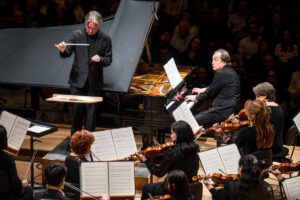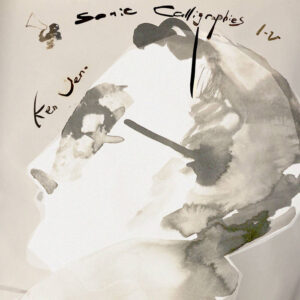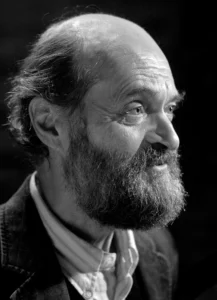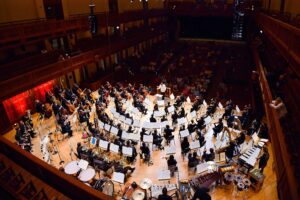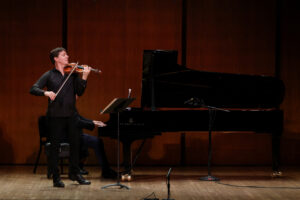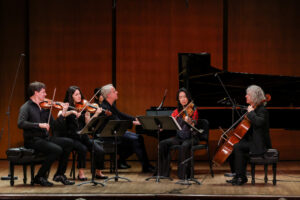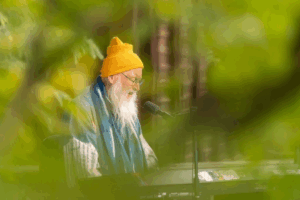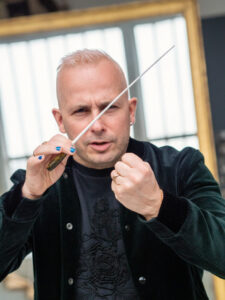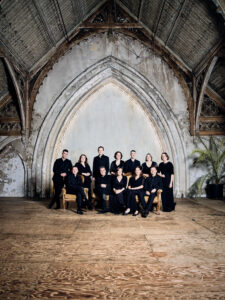
Stile Antico Returns to Sing at St. Mary’s
Church of Saint Mary the Virgin
November 9, 2025
Published in Sequenza 21
By Christian Carey
NEW YORK – The British choral group Stile Antico has been together for twenty years, and while they have premiered several new works, the ensemble specializes in repertoire from the Renaissance era. Indeed, this past Saturday on Miller Theatre’s Early Music series, at the Church of Saint Mary the Virgin in midtown Manhattan, the theme of their program was “The Golden Renaissance.” At St. Mary’s, Stile Antico presented works by noteworthy composers of the sixteenth and early seventeenth centuries. They may be lumped together in a historical pigeon hole, but Renaissance composers exemplify a plethora of approaches, and the music often is quite demanding to sing. Stile Antico took a versatile approach in their program, sometimes performing with their full complement of a dozen singers and at others with subgroups thereof. Thus, the concert afforded listeners intimate experiences as well as resounding anthems sung in full voice.
Some of the selections were the usual suspects on choral programs, but there were also a few less familiar pieces that proved worthy companions to the hits of the Renaissance. One of those that might be considered a “deep cut” was “A un niño llorando,” a villancico by Franciso Guerrero (1528-1599). Its subject was the story of the gifts given to the infant Jesus by the magi. Beginning with a solo by soprano Rebecca Hickey, its compound rhythms provided both the lilt of a cradle song and a framework for hocketing between parts. Two other Spanish composers were represented on the program, with Recessit pastor noster from the Tenebrae Responsories by Tomá Luís De Victoria (1548-1611) performed with dramatic declamation and cascading linear overlaps. Jubilate Deo by Cristóbal De Morales (1500-1553) is peppered with plangent dissonances. Apparently the composer took his jubilation quite seriously. All was well in the end, with the final cadence of both parts of the motet arriving to rest on a major chord. These works, as well as most of the other music on the program, have been recorded by Stile Antico.
A more festive mood was captured in the performances of O clap your hands and Hosanna to the Son of David, both by Orlando Gibbons (1583-1625). Short phrases ricocheted between subsections of the choir, delivered in crisply animated fashion. Ein Kind geborn, by Michael Praetorius (1571-1599), subdivides the choir into various smaller units who engage in a kind of call and response, the resulting antiphony building to a thrilling tutti finale.
Clemens non Papa (1510-1555) is a composer who is underserved by current ensembles. His best known piece, Ego flos campi, was sung in a luxuriantly legato rendition. Stile Antico’s interpretative approach has been enriched over the years, with more dynamic and articulative shadings and ever greater fluidity of pacing. Hearing them sing something again, such as Ego flos campi, underscores their evolving approach to this repertoire. In Manus Tuas, by Thomas Tallis (1505-1585) is another piece that shows Stile Antico to their best advantage, the ensemble making the most of plangent cross-relations to paint the aspects of devotion and surrender integral to its text.
Included on the program was The Phoenix and The Turtle, commissioned nearly a decade ago from Huw Watkins. A setting of Shakespeare, various explanations of the poem’s meaning have been suggested, from symbolizing various lovers to eulogizing Christian martyrs.Watkins uses a polytonal framework that has a number of added note chords, corruscating motivic entrances, and much antiphony. The result sounded well in the reverberant acoustics of St. Mary’s.
This was the 500th anniversary of the birth of Giovanni Pierluigi da Palestrina (1525-1594), and Stile Antico has recorded an entire album of his music as part of their trio of Golden Renaissance CDs, with the others representing Byrd and Josquin. All are well worth seeking out. Two pieces by the composer William Byrd were featured in the concert. A recusant Catholic, Byrd vented his anger at the persecution of those of his faith in “Exsurge Domine,” the concert’s fiery opener. His late piece “Retire my soul” was of a mournful cast and sung with plaintive, sinuous legato lines. Josquin’s masterpiece of compositional architecture, Salve Regina, with two borrowed parts to thread between original lines, was performed with seamless interweaving of its contrapuntal entrances. As for Palestrina, his Laudate Dominum couldn’t be done on the choir’s last visit to St. Mary’s, as baritone Gareth Thomas was too ill to perform, and the piece’s twelve-part divisi would not permit it. For an encore, they performed it here, and the rendition proved well worth the wait.

